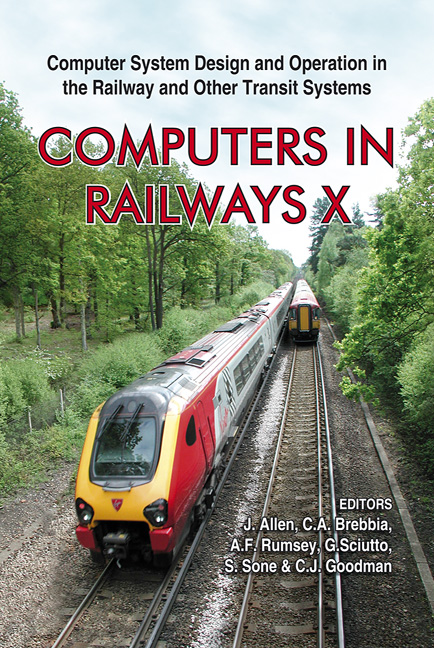Distributed Constraint Satisfaction Problems To Model Railway Scheduling Problems
Price
Free (open access)
Transaction
Volume
88
Pages
9
Published
2006
Size
1,178 kb
Paper DOI
10.2495/CR060291
Copyright
WIT Press
Author(s)
P. Tormos, M. Abril, M. A. Salido, F. Barber, L. Ingolotti & A. Lova
Abstract
Railway Scheduling is considered to be a difficult and time-consuming task. Despite real railway networks being modelled as Constraint Satisfaction Problems (CSPs), they require a huge number of variables and constraints. The general CSP is known to be NP-complete; however, distributed models may reduce the exponential complexity by dividing the problem into a set of subproblems. In this work, we present several proposals to distribute the railway scheduling problem into a set of sub-problems as independently as possible. The first technique carries out a partition over the constraint network, meanwhile the second distributes the problem by trains and the third technique divides the problem by means of contiguous stations. 1 Introduction The literature of the 1960s, 1970s, and 1980s relating to rail optimization was relatively limited. Compared to the airline and bus industries, optimization was generally overlooked in favor of simulation or heuristic-based methods. However, Cordeau et al. [1] point out greater competition, privatization, deregulation, and increasing computer speed as reasons for the more prevalent use of optimization techniques in the railway industry.Our review of the methods and models that have been published indicates that the majority of authors use models that are based on the Periodic Event Scheduling Problem (PESP) introduced by Serafini and Ukovich [2]. The PESP considers the problem of scheduling as a set of periodically recurring events under periodic time-window constraints. The model generates disjunctive constraints that may cause the exponential growth of the computational
Keywords





